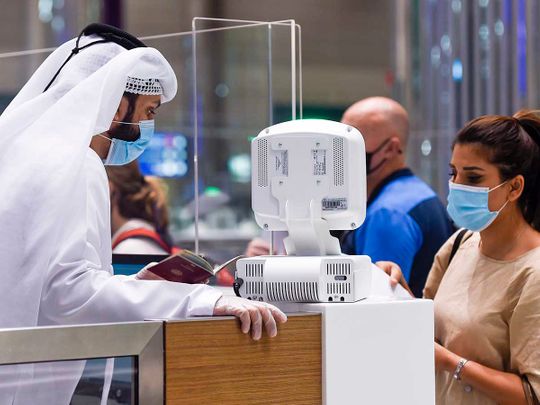
Dubai: UAE airlines continue to add more seats on key destinations even as the travel industry deals with the Omicron scare.
Data from consultancy firm OAG shows that in the weeks after the discovery of the latest coronavirus variant, airlines flying from UAE have added seats. Dubai-Riyadh has been the busiest international air route in the world this month with about 284,000 seats, followed by Cairo-Jeddah (282,413 seats), and Dubai-London Heathrow (253,567 seats).
“In terms of seat capacity, we are not really seeing any type of major reduction, with the exception of routes to few African countries that were impacted, such as South Africa and Zimbabwe,” said André Martins, Partner, Oliver Wyman. Martins believes the current uptick in traffic is mainly due to Dubai’s transformation into an end destination.
While previously Dubai was a transit destination for passengers flying from Europe to Asia (and vice versa), the city has emerged as a leading global tourist spot with point-to-point traffic beginning to represent a bigger share. “There are many other kinds of factors that contribute to that such as the Expo and a few other big events,” said Martins. “Hopefully, in the mid-term to long-term, things will be back to normal.”
Still, the “transfer flows are very relevant for airlines in the region because they represent a large majority of the traffic,” said Martins. “That market has been more impacted because passengers are concerned about flying longer distances.”
Milder impact
Martins said the latest wave of restrictions as a result of the ‘Omicron’ variant will not have a huge impact on global air travel demand. “As far as I'm aware, there is no discussion taking place to fully enter into a lockdown - I think the governments are way more cautious when it comes to the implementation of these types of policies,” said Martins.
“The pandemic has already been here for quite some time and people are aware of all these kinds of uncertainties. I would expect less last-minute rush type of reactions”
Fares remain high
Air fares to UAE from some of its biggest markets have surged in the last few months - and limited capacity is to blame. “The fares are mainly driven by two things; firstly, we are not yet at the level that we used to be before in terms of capacity being deployed,” he added. “Secondly, there is obviously a very big increase in the demand to UAE driven by different kinds of factors.”
Martins added that government reforms and recent policies were encouraging people to stay in UAE for longer. “We observe that many people moving to the region are not doing so on a temporary basis.”
Qatar World Cup
Next year’s FIFA World Cup will pull millions of football fans to the region and UAE airlines will benefit greatly. “We expect a big increase in traffic to Doha due to the major event and it will also generate a lot of traffic for UAE by way of stopovers,” said Martins. “UAE’s residents will also be flying in and out of the country to attend the tournament.”
Airports vs airlines
With passenger numbers recovering, airports have begun hiking their landing fees and this has not gone down well with airlines. Willie Walsh, the Director-General of the International Air Transport Association (IATA), has been pretty outspoken on the matter.
Referring to airports, Walsh said: “They continue to shock everybody with their demand for a 90 per cent increase in airport charges at a time when the industry is trying to get back on its feet.”
Martins believes that while the airlines’ concerns are valid, airports require a high amount of working capital to continue their operations. “Airlines have become way more careful when it comes to operational costs, but the same time, airports have high fixed costs and are very complex to run”
Airports typically involve a 15 to 30-year investment cycle and “depending on the point that you are on the investment cycle, you might need to have higher or lower airport charges to compensate for some of those investments,” said Martins.









